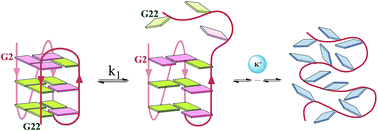New microsecond intramolecular reactions of human telomeric DNA in solution
Abstract
Careful T-jump relaxation kinetic experiments in the microsecond timescale conducted in dilute solutions of human telomeric DNA at pH = 7.5 and 25 °C, have evinced for the first time two different equilibria. The sets of data recorded concur with two G-quadruplex ↔ G-triplex equilibria coexisting in the presence of both Na+ and K+-buffer ions.


 Please wait while we load your content...
Please wait while we load your content...